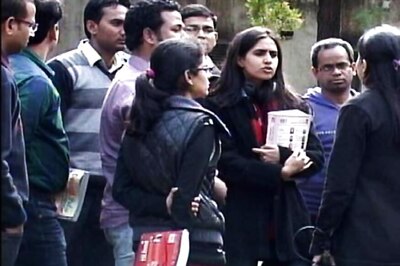
views
New Delhi: As more trains become superfast and local passengers pay through their nose to go to office, CNN-IBN finds out that the speed of most of these trains remains the same, but passengers end up paying more.
Local commuters in Navsari in Gujarat carried protest against superfast trains to the tracks bringing the movement of trains on this busy trunk route to a grinding halt.
In the East there was similar trouble with stoning on superfast trains passing through Purulia and Asansol.
The local police and the authorities could do little as passengers protested the steep hike in fares.
CNN-IBN has learnt that while 140 trains have been granted the superfast tag from July 1, the speed actually remains the same in quite a few them.
A commuter says, “With local train being categorised as superfast, the fares have gone up. A second-class ticket cost Rs 150 more and the first-class ticket cost Rs 485 more.”
Out of 28 commuter trains meant for inter-city traffic in the country, the speed of 12 remains the same. For the rest 16 trains the speed has increased between 1 kmph to 10 kmph.
Local passengers save a maximum of 10 minutes per journey but end up paying an extra Rs 10 to Rs 25 daily.
Eastern railways have re-classified 11 trains in the superfast category. Of course long distance passengers will gain an hour or two with the railways trying to speed up its act.
Bringing more trains into the superfast fold might mean an image makeover for the railways but even as it tries to earn more revenue, it’s the local commuters who find themselves short changed.




















Comments
0 comment